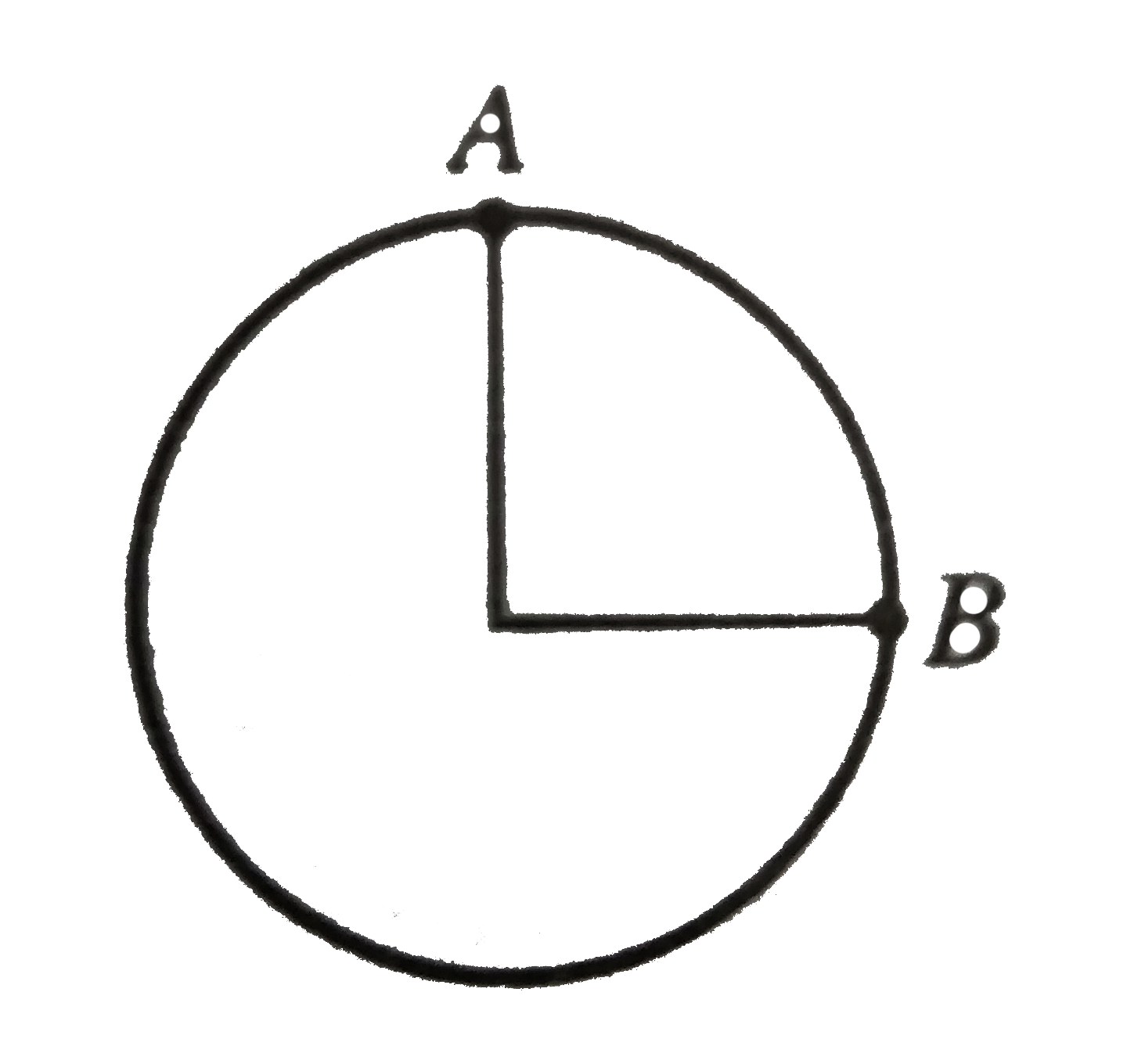An electron of mass m, moves around the nucleus in a circular orbit of radius .r. under the action of centripetal force .F.. The equivalent electric current is
The correct Answer is:A
To find the equivalent electric current I for an electron moving in a circular orbit around a nucleus, we can follow these steps:
Step 1: Understand the Concept of Electric Current
Electric current I is defined as the flow of charge per unit time. Mathematically, it can be expressed as:
I=Qt
where Q is the charge and t is the time.
Step 2: Determine the Charge and Time Period
For an electron, the charge Q is equal to the elementary charge e. The time period T for one complete revolution in a circular orbit of radius r can be expressed in terms of the velocity v:
T=2πrv
Thus, the current can be rewritten as:
I=QT=eT=e⋅v2πr
Step 3: Relate Velocity to Centripetal Force
The centripetal force F acting on the electron is given by:
F=mv2r
From this, we can express the velocity v in terms of F:
v2=Frm⇒v=√Frm
Step 4: Substitute Velocity into the Current Equation
Substituting the expression for v into the current equation:
I=e⋅√Frm2πr
Step 5: Simplify the Expression
Now, simplifying the expression for I:
I=e2πr⋅√Frm=e2π⋅√Fm⋅1√r
Final Expression
Thus, the equivalent electric current I is given by:
I=e2π√Fm⋅1√r
Electric current I is defined as the flow of charge per unit time. Mathematically, it can be expressed as:
I=Qt
where Q is the charge and t is the time.
For an electron, the charge Q is equal to the elementary charge e. The time period T for one complete revolution in a circular orbit of radius r can be expressed in terms of the velocity v:
T=2πrv
Thus, the current can be rewritten as:
I=QT=eT=e⋅v2πr
The centripetal force F acting on the electron is given by:
F=mv2r
From this, we can express the velocity v in terms of F:
v2=Frm⇒v=√Frm
Substituting the expression for v into the current equation:
I=e⋅√Frm2πr
Now, simplifying the expression for I:
I=e2πr⋅√Frm=e2π⋅√Fm⋅1√r
Thus, the equivalent electric current I is given by:
I=e2π√Fm⋅1√r
Topper's Solved these Questions
- CURRENT ELECTRICITYBOOK - AAKASH SERIESCHAPTER - CURRENT ELECTRICITYEXERCISE - LECTURE SHEET (EXERCISE-I LEVEL- II (ADVANCED) (Straight Objective Type Questions))
4 Videos
- CURRENT ELECTRICITYBOOK - AAKASH SERIESCHAPTER - CURRENT ELECTRICITYEXERCISE - LECTURE SHEET (EXERCISE-I LEVEL- II (ADVANCED) (More than one correct answer type Questions))
3 Videos
- CURRENT ELECTRICITYBOOK - AAKASH SERIESCHAPTER - CURRENT ELECTRICITYEXERCISE - PROBLEMS (LEVEL-II)
27 Videos
- DUAL NATURE OF RADIATION AND MATTERBOOK - AAKASH SERIESCHAPTER - DUAL NATURE OF RADIATION AND MATTEREXERCISE - PRACTICE EXERCISEX
42 Videos
Similar Questions
A particle of mass M moves with constant speed along a circular path of radius r under the action of a force F. Its speed is
View SolutionAn object of mass m moves with constant speed in a circular path of radius r under the action of a force of constant magnitude F. the kinetic energy of object is
View SolutionTwo electrons move around the nucleus in circular orbits of 'R' and '4R' in an atom. Find out the ratio of time taken by them to complete one complete revolution.
View SolutionIf an electron revolves around a nucleus in a circular orbit of radius R with frequency n, then the magnetic field produced at the center of the nucleus will be
View SolutionIn an atom, two electrons move around nucleus in circular orbits of radii ( R) and ( 4R) . The ratio of the time taken by them to complete one revolution is :
View SolutionAn electron of mass m and charge -e moves in circular orbit of radius r round the nucleus of charge +Ze in unielectron system. In CGS system the potential energy of electron is
View SolutionAn electron is moving round the nucleus of a hydrogen atom in a circular orbit of radius r. The coulomb force →F between the two is (where k=14πε0)
View SolutionIn the Bohr's model of hy drogen atom, the electron moves around the nucleus in a circular orbit of radius 5×10−11m. Its time period is 1.5×10−16s. The current associated with the electron motion is:-
View SolutionA particle is moving in a circular path of radius 1 m. under the action of a centripetal force, the speed √2πms−1 of the particle is constant. Find the average of the velocity (inms−1) between A and B.

View SolutionAn electron moves in circular orbit of radius r with constant speed v.The force acting in it is
View Solution
